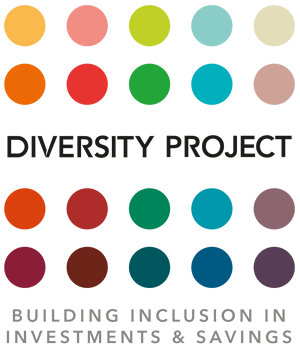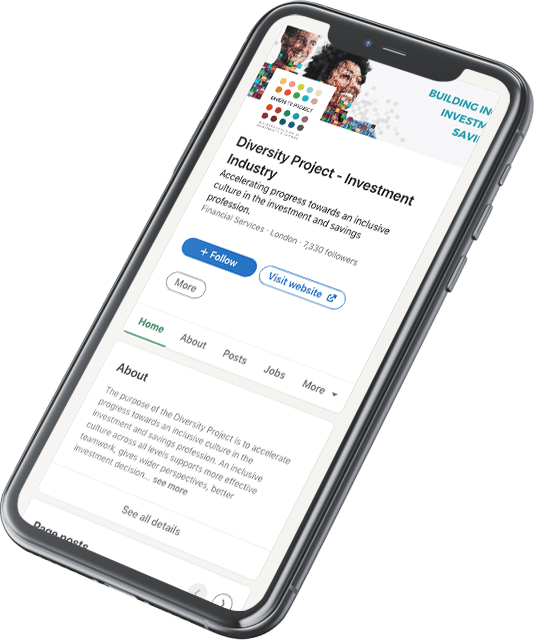The Diversity Project, run by and for the savings and investment industry, seeks to raise awareness on issues related to flexible working, gender parity, LGBT and disability.
Businesses and organisations across the UK, ranging from the arts and the media to construction, IT and of course financial services, struggle with achieving real diversity in their workforce. Investment management, which as an industry has a substantial average gender pay gap, is no exception.
Gender pay gap
The gender pay gap, disclosed by companies with more than 250 employees, revealed that three out of four companies pay their male employees more than their female counterparts. This has lent urgency to the public consensus that solutions to address unequal pay must be identified and executed. It is hoped that by identifying the challenges, strategies can be implemented to improve the recruitment and retention of a more diverse workforce.
But as investors, we don’t just have a responsibility as employers to tackle diversity issues such as the gender pay gap we also need to think about what responsibilities we have to champion diversity as stewards of our customers’ assets.
Diversity in the workplace is good for business and good for the economy. According to Thomson Reuters, which runs a D&I (diverse and inclusive) index “diversity must
be seen as a core value and be deeply embedded in corporate culture.” Over the past ten years, responsible investing has become a widely considered investment strategy with many investors attributing value to environmental, social and governance factors (ESG).
Increasingly, awareness among institutional asset owners, pension scheme members and individual savers is shifting attitudes in favour of more sustainable approaches to investment. According to the Global Sustainable Investing Alliance (GSI), about US$23 trillion of assets are professionally managed under responsible investment strategies, an increase of 25% since 2014. In relative terms, a responsible investment approach has been adopted for 26% of all professionally managed assets globally. In Europe, total assets committed to sustainable and responsible investment strategies grew by 12% between 2014 and 2016 to reach just over US$12 trillion, according to the GSI.
Sustainable investing considers ESG factors in portfolio selection and management, with the aim of assessing a company’s ability to sustain a competitive advantage over the long term. One component, alongside environment, the supply chain and governance, is employee attraction and retention.
Much greater attention is now paid to “intangible” drivers of value, such as board diversity, quality of human capital, strategies to make the workforce more inclusive and company culture.
In a survey this year, Morgan Stanley ranked more than 1,600 global stocks and concluded that gender diverse companies offered lower volatility with similar returns.
The diversity translated into increased productivity, greater innovation, better decision-making and higher employee retention and satisfaction. There is evidence on a similar theme from McKinsey, which found last year that companies that outperformed were more likely to have greater gender, ethnic and cultural diversity within their leadership.
The UN Sustainable Development Goals: going global?
Once seen exclusively as a set of targets for the developing world, the 2030 United Nations Sustainable Development Goals (UN SDGs) have in the last couple of years started to provide a useful framework for investors. To make better informed investment decisions, investment managers need to think about globally applicable issues such as long-term sustainable solutions, diversity and the social and environmental impact of investee companies.
Gender parity, reduced inequalities and inclusivity are core tenets of SDG5 Gender Equality and SDG10 Reduced Inequalities. And as more capital is channelled towards investments aiming to make a tangible impact on global challenges, new metrics will be needed. Anne Richards, M&G’s Chief Executive, in an article for FTfm (5 April 2018), called for “a new, standardised scorecard for measuring the performance of funds that could incorporate a range of metrics, including some or all of the following: environmental impact, carbon footprint, supply chain sustainability, social impact, and diversity and inclusion that could align with the UN SDGs”.
Making it happen
How can the investment sector promote better environmental, social and governance practices, including diversity and equality among our investees?
As an active fund manager, M&G’s strategies run from negative and positive screening through to infrastructure investing and thematic impact investing specifically linked to the UN SDGs. The common theme is an explicit emphasis on environmental, social and governance issues and a commitment to active engagement, whether as debt holders, shareholders or asset owners.
Passive managers invested, for instance, in a marketcap-based country index, do not have the option of divesting a company when corporate behaviour falls short on diversity and other ESG related issues. But they can still deploy votes and are able to engage with management. Recently, Legal & General Investment Management (LGIM), stepped up pressure on boards to address climate change, diversity and ESG issues as part of its efforts to integrate ESG into its culture and everyday thinking.
For instance, as part of its push for gender equality, it plans to vote against FTSE 350 boards that do not meet the 2017 target of appointing a 25% female board.
How the Diversity Project is helping
The Diversity Project is far more than an initiative to improve diversity in our own back yard, although there is much work still to do here. With some of the UK’s biggest investors and asset owners supporting it, The Diversity Project has the ability to influence the investment community to use its voice and voting power to make a national and global impact on diversity and equality.
This article can be downloaded as a PDF here: http://diversityproject.com/resource/overview-issues-triggered-diversity-project





